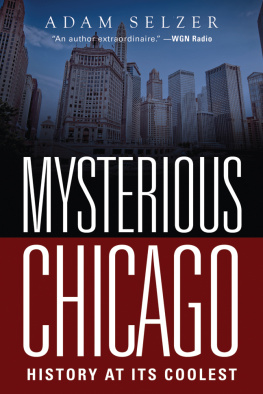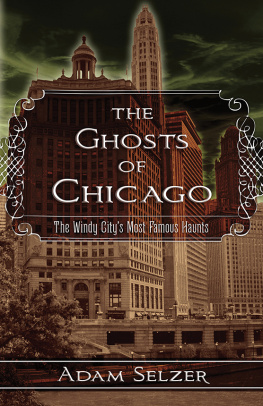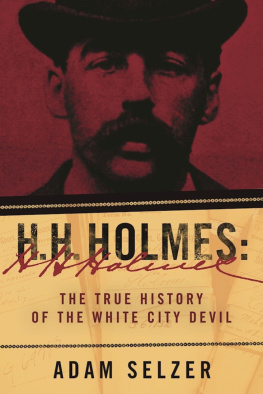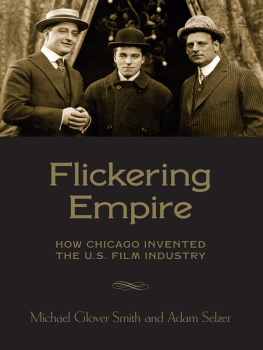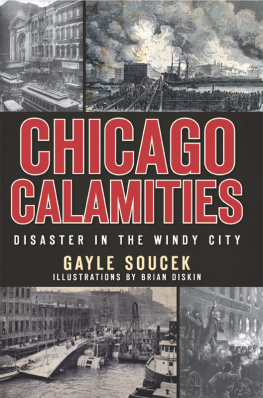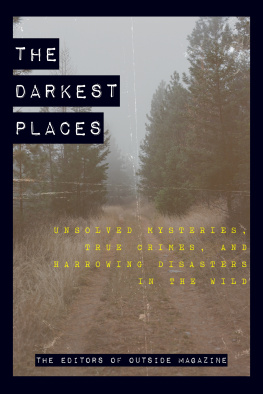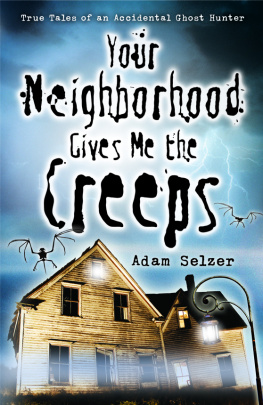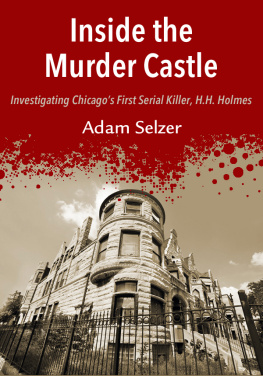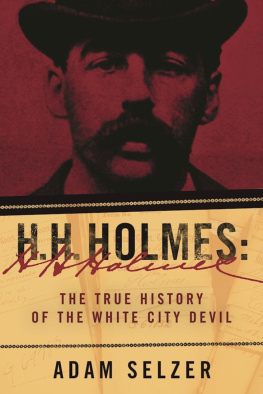Copyright 2016 by Adam Selzer
All rights reserved. No part of this book may be reproduced in any manner without the express written consent of the publisher, except in the case of brief excerpts in critical reviews or articles. All inquiries should be addressed to Skyhorse Publishing, 307 West 36th Street, 11th Floor, New York, NY 10018.
Skyhorse Publishing books may be purchased in bulk at special discounts for sales promotion, corporate gifts, fund-raising, or educational purposes. Special editions can also be created to specifications. For details, contact the Special Sales Department, Skyhorse Publishing, 307 West 36th Street, 11th Floor, New York, NY 10018 or .
Skyhorse and Skyhorse Publishing are registered trademarks of Skyhorse Publishing, Inc., a Delaware corporation.
Visit our website at www.skyhorsepublishing.com.
10 9 8 7 6 5 4 3 2 1
Library of Congress Cataloging-in-Publication Data is available on file.
Cover design by Rain Saukas
Cover photo credit iStock
ISBN: 978-1-5107-1342-0
Ebook ISBN: 978-1-5107-1345-1
Printed in the United States of America
CONTENTS
INTRODUCTION
I worked in the ghost tour biz for a decade, and I never saw anything that Id swear in front of a panel of scientists was really a dead person up and floating around. But I kept going on ghost hunts, because a ghost is the least of what you can find when you go poking around an old Chicago building; in old theaters, hotels, and skyscrapers across the city, I found hidden staircases, secret passages, nooks and crannies, and occasionally even tunnels. At one theater we moved a sign on the wall and found four lip-prints behind it, signed and dated on December 15, 1939. A scan of the newspaper archives from the date indicated that the prints were probably left by a vaudeville troupe called The Dancing Sweethearts.

The lip-prints in the Oriental Theater.
This was the kind of research that really hooked me. Books on Chicago history can be a good starting place, but if you really want to investigate, theyre just a start. Theres a near-endless supply of fantastic stories that occupied a lot of space in newspapers in their time, but somehow never made it into our collective history.
In searching for material for my books, blogs, and tour stories, Ive spent many happy days poring over microfilm reels of defunct newspapers, reading through crumbling paperwork in the legal archives, and tracking down surviving witnesses. I could probably spend the rest of my life just finding all of the primary data on H. H. Holmes, perhaps the most fasincating of our antique murderers (and about whom almost nothing accurate has ever been written). But theres always a new story to look into, and every new story comes with new mysteries to solve.
Chicago history is full of questions that no one expects will ever be answered. Among the more famous: What really started the Great Chicago Fire? What was the St. Valentines Day Massacre really all about, and who were the shooters? Was Marshall Field, Jr., really shot at the Everleigh Club, not in his living room? Who killed the Grimes Sisters? Beyond those are several lesser-known mysteries. Was there really a near-successful attempt to revive Nick The Choir Singer Viana after he was hanged? And what was the deal with the submarine wreck that was found in the Chicago River in 1915?
Looking for the answers to these questions can be a real treasure hunt. When Im working on new stories to tell on my tours, I realize that I dont need every piece of data; plenty of tour guides get by on reading a few pulp retellings of a story, then making up the rest, and customers are none the wiser. But Indiana Jonesan authority on these thingsonce said, Archaeology is the search for facts, not truth. We cannot afford to take mythology at face value. Thats my motto about history, too.
Also, people can fact-check me on their phones nowadays; Im too paranoid to lie. So I roll up my sleeves and try to find out everything I can about every story I tell.
Though Ive tried to focus on lesser-known stories that have never really been retold for this volume, Ive also naturally included several of the more famous stories. In those cases, Ive at least tried to research them enough that I feel like Im including data that you wont find in countless other books that have told the same story.
Many of the stories in this book Ive researched in depth. Others I dont know quite as well, particularly the ones that happened too recently for me to be flippant about them on tours. In a lot of cases, Ive probably missed a clue or two. The solution to some of these mysteries could still be out there someplace, maybe not even that deeply buried.
Ill race you to it!
Adam Selzer
Mysterious Chicago Tours
mysteriouschicago.com

The author in the basement of the Sixty-Third Street post office, in the small portion that overlaps with the site of the H.H. Holmes Murder Castle, 2016.
Does the Historical Society Have the Bones of an Early Settler?
If you want to see a dead body, cemeteries arent going to help you. Theyre in the business of keeping the dead hidden beneath the sod and behind marble slabs. But plenty of corpses can be seen in Chicagos museums. The Field Museum has its mummies. The Museum of Science and Industry recently hosted Body Worlds, an exibit with over 200 preserved human specimens. The Museum of Surgical Sciences has all kinds of wonderful stuff. The Chicago History Museum isnt quite as morbid as some of them, but it does have the bed on which Abraham Lincoln died on display.
And, someplace in storage, they have a box containing the skeleton of one of Chicagos pioneers.
Or, anyway, they think its him.
In 1896, the Chicago Historical Society opened their first museum in a new space on Dearborn Street, a hulking gothic mansion (now a nightclub) featuring displays of weapons from the Haymarket Affair, items that belonged to George Washington, and a fireplace that had survived the Great Chicago Fire in 1871, among other curios. In the corner of the south room on the second floor were the bones of Jean LaLime, one of the citys earliest non-native settlers, and possibly the citys first murder victim.
Back when the eighteenth century was drawing to a close, the land that would one day be Chicago sat right about on the edge of the frontier; you could hunt big game where Chicago Avenue is now, and wolves were common in the woods where Halsted Street now sits. Further west was the sort of wilderness we can barely imagine today. Though a Potowatomie tribe lived nearby, the first non-native settler to live in what is now downtown Chicago is generally agreed to have been Jean Baptiste Point du Sable, who arrived in the late 1700s and set up an impressive house for himself.
Little about du Sable or his background is really known; some say he was a Haitian native who had studied in France and returned to America to sell coffee, and a fictionalized biography in 1953 theorized that he was the son of a pirate and a freed slave. Theres not really enough data to establish either of those as true. The commonly seen portrait of him was drawn decades after his death, and may be strictly the result of the artists imagination. Du Sable is as big a mystery as any in the city. To call him the founder of the city, as we sometimes do, is a bit of a misnomer; he was the first non-native to live here, but didnt set out a plan of roads or anything, and abruptly left town around 1800. A couple of nineteenth-century biographies suggest that he left the area because he was angry that the Potowatamie wouldnt make him chief of the tribe, though these stories werent based on any real data, either.

